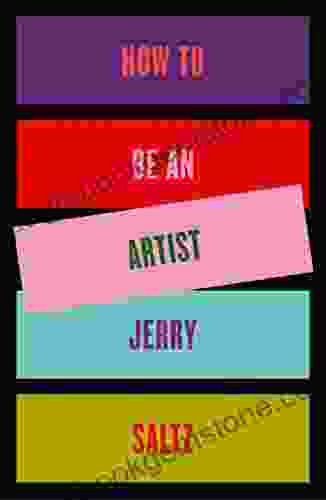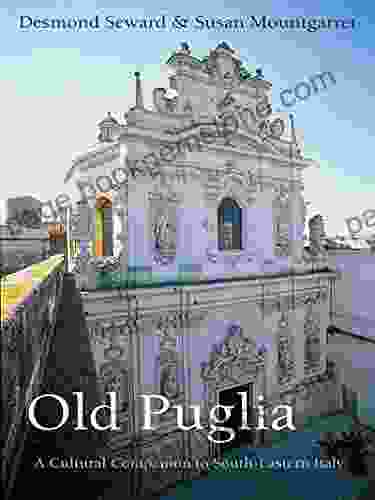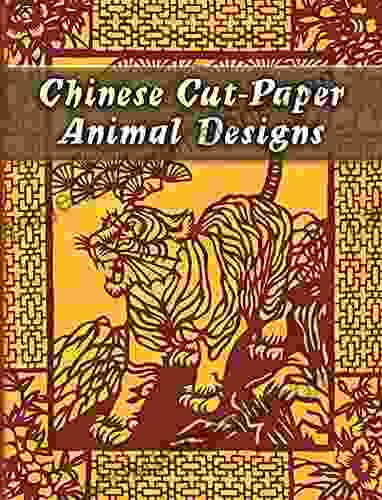Essential Techniques of Landscape Drawing

Landscape drawing is a beautiful and rewarding art form that can be enjoyed by people of all ages and skill levels. Whether you're just starting out or you're an experienced artist, there are always new techniques to learn and new ways to improve your skills.
In this comprehensive guide, we'll cover all the essential techniques of landscape drawing, from basic pencil sketching to advanced watercolor painting. We'll also provide tips and advice on how to choose the right materials, how to capture the beauty of nature, and how to create your own unique landscape drawings.
4.5 out of 5
| Language | : | English |
| File size | : | 290743 KB |
| Text-to-Speech | : | Enabled |
| Screen Reader | : | Supported |
| Enhanced typesetting | : | Enabled |
| Print length | : | 549 pages |
Basic Pencil Sketching
Pencil sketching is a great way to start learning landscape drawing. It's a relatively simple technique that can be used to create beautiful and realistic drawings.
To start a pencil sketch, you'll need a few basic materials:
- A pencil
- A piece of paper
- An eraser
Once you have your materials, you can start by drawing a simple outline of your landscape. Use light, gentle strokes to sketch in the basic shapes of the land, the trees, and the sky. Don't worry about being too detailed at this stage, just focus on getting the overall composition of your drawing down.
Once you have a basic outline, you can start to add details. Use a variety of pencil strokes to create different textures and effects. For example, you can use light, feathery strokes to create soft, fluffy clouds, or you can use darker, more defined strokes to create hard, jagged rocks.
As you add details, be sure to pay attention to the light and shadow in your drawing. The way the light hits your landscape will affect the way it looks, so be sure to observe the shadows and highlights carefully.
Charcoal Drawing
Charcoal drawing is another popular technique for landscape drawing. Charcoal is a versatile medium that can be used to create a wide range of effects, from soft, delicate drawings to bold, dramatic pieces.
To start a charcoal drawing, you'll need a few basic materials:
- A charcoal pencil
- A piece of paper
- A kneaded eraser
Once you have your materials, you can start by drawing a simple outline of your landscape. Use light, feathery strokes to sketch in the basic shapes of the land, the trees, and the sky. Don't worry about being too detailed at this stage, just focus on getting the overall composition of your drawing down.
Once you have a basic outline, you can start to add details. Use a variety of charcoal strokes to create different textures and effects. For example, you can use light, feathery strokes to create soft, fluffy clouds, or you can use darker, more defined strokes to create hard, jagged rocks.
As you add details, be sure to pay attention to the light and shadow in your drawing. The way the light hits your landscape will affect the way it looks, so be sure to observe the shadows and highlights carefully.
Pastel Drawing
Pastel drawing is a beautiful and vibrant way to create landscape drawings. Pastels are made from pure pigment, which gives them a rich, intense color. They're also very versatile, and can be used to create a wide range of effects, from soft, dreamy landscapes to bold, graphic pieces.
To start a pastel drawing, you'll need a few basic materials:
- A set of pastels
- A piece of paper
- A fixative
Once you have your materials, you can start by drawing a simple outline of your landscape. Use light, feathery strokes to sketch in the basic shapes of the land, the trees, and the sky. Don't worry about being too detailed at this stage, just focus on getting the overall composition of your drawing down.
Once you have a basic outline, you can start to add details. Use a variety of pastel strokes to create different textures and effects. For example, you can use light, feathery strokes to create soft, fluffy clouds, or you can use darker, more defined strokes to create hard, jagged rocks.
As you add details, be sure to pay attention to the light and shadow in your drawing. The way the light hits your landscape will affect the way it looks, so be sure to observe the shadows and highlights carefully.
Watercolor Drawing
Watercolor drawing is a beautiful and challenging way to create landscape drawings. Watercolor is a transparent medium, which means that the colors can be layered and blended to create beautiful, ethereal effects.
To start a watercolor drawing, you'll need a few basic materials:
- A set of watercolor paints
- A piece of watercolor paper
- A brush
- A cup of water
Once you have your materials, you can start by drawing a simple outline of your landscape. Use light, feathery strokes to sketch in the basic shapes of the land, the trees, and the sky. Don't worry about being too detailed at this stage, just focus on getting the overall composition of your drawing down.
Once you have a basic outline, you can start to add details. Use a variety of watercolor strokes to create different textures and effects. For example, you can use light, feathery strokes to create soft, fluffy clouds, or you can use darker, more defined strokes to create hard, jagged rocks.
As you add details, be sure to pay attention to the light and shadow in your drawing. The way the light hits your landscape will affect the way it looks, so be sure to observe the shadows and highlights carefully.
Acrylic Painting
Acrylic painting is a versatile medium that can be used to create a wide range of landscape drawings. Acrylics are water-based, but they dry quickly and have a
4.5 out of 5
| Language | : | English |
| File size | : | 290743 KB |
| Text-to-Speech | : | Enabled |
| Screen Reader | : | Supported |
| Enhanced typesetting | : | Enabled |
| Print length | : | 549 pages |
Do you want to contribute by writing guest posts on this blog?
Please contact us and send us a resume of previous articles that you have written.
 Best Book
Best Book Page Flip
Page Flip Bookshelf
Bookshelf Literary loom
Literary loom Chapter
Chapter Bookish
Bookish PageTurner
PageTurner Bibliophile
Bibliophile Story
Story Inkwell
Inkwell Bookworm
Bookworm Labyrinth
Labyrinth Plot Twist
Plot Twist Prose
Prose Paperback
Paperback Storyteller
Storyteller Sanctuary
Sanctuary Fiction
Fiction Reading
Reading Chronicle
Chronicle Read
Read Lauren Francis Sharma
Lauren Francis Sharma Tom Dunkel
Tom Dunkel Pete Salgado
Pete Salgado Jelani Cobb
Jelani Cobb Susie Hodge
Susie Hodge Ava Archer
Ava Archer James E Seaver
James E Seaver Butch Hartman
Butch Hartman Jasper T Scott
Jasper T Scott Jason Waguespack
Jason Waguespack Ulrike Fuchs
Ulrike Fuchs Robert Rosen
Robert Rosen Chris Kennedy
Chris Kennedy Ryan Leslie
Ryan Leslie Jazz E
Jazz E Jon Steel
Jon Steel V F Gutierrez
V F Gutierrez Jeff Shaara
Jeff Shaara Marcy Conway
Marcy Conway Lally Brown
Lally Brown Bonny Snowdon
Bonny Snowdon Jeff Hobbs
Jeff Hobbs Paula M Block
Paula M Block Vaneetha Risner
Vaneetha Risner Plutarch
Plutarch Eva Van Loon
Eva Van Loon Tina Turner
Tina Turner Kira Salak
Kira Salak James Huntington
James Huntington Martin Gilbert
Martin Gilbert Traci Bunkers
Traci Bunkers Sianne Ngai
Sianne Ngai Niqua Nakell
Niqua Nakell Hourly History
Hourly History Jack Hitt
Jack Hitt Tarry Lindquist
Tarry Lindquist Megan Mackie
Megan Mackie John Joseph Adams
John Joseph Adams Baby Professor
Baby Professor Marc Dipaolo
Marc Dipaolo Peter F Stevens
Peter F Stevens Jacqueline Winspear
Jacqueline Winspear Laxuri Art
Laxuri Art William L Iggiagruk Hensley
William L Iggiagruk Hensley Patti M Hall
Patti M Hall Kaitlyn Dornbier
Kaitlyn Dornbier Jan Cohen Cruz
Jan Cohen Cruz Xueting Christine Ni
Xueting Christine Ni Nancy Ditomaso
Nancy Ditomaso Tasha Black
Tasha Black Laura Slater
Laura Slater Second Edition Kindle Edition
Second Edition Kindle Edition Paul Gauguin
Paul Gauguin Martina M Lanier
Martina M Lanier Laura Beth Love
Laura Beth Love Katrina Rodabaugh
Katrina Rodabaugh Julia Rothman
Julia Rothman Sean Wallace
Sean Wallace Kyle Anthony
Kyle Anthony Laurie Tom
Laurie Tom Mira Schor
Mira Schor Maureen T Corrigan
Maureen T Corrigan Seth Rain
Seth Rain Jonathan Drori
Jonathan Drori Ryan Dunlavey
Ryan Dunlavey Margaret Hermes
Margaret Hermes Kim Fairley
Kim Fairley Julia L Foulkes
Julia L Foulkes Dorit Elisha
Dorit Elisha Vikki Haffenden
Vikki Haffenden Northrop Davis
Northrop Davis Samantha Irby
Samantha Irby Dean Dalton
Dean Dalton Janet Carlson
Janet Carlson John Kane
John Kane Taylor Moore
Taylor Moore Italo Calvino
Italo Calvino Rosie Rivera
Rosie Rivera Robert B Pippin
Robert B Pippin Joe Fig
Joe Fig Martin Pistorius
Martin Pistorius John Wilkinson
John Wilkinson Sanford Meisner
Sanford Meisner Susan Kesler Simpson
Susan Kesler Simpson Harold Speed
Harold Speed Mark Rothko
Mark Rothko Jana K Lipman
Jana K Lipman Victoria Charles
Victoria Charles Merry White
Merry White Michael Head
Michael Head Terrance Zepke
Terrance Zepke James R Rush
James R Rush William Gray
William Gray Janet Adler
Janet Adler Tyanna
Tyanna Nana Kwame Adjei Brenyah
Nana Kwame Adjei Brenyah Kristen Faber
Kristen Faber Joy Avery
Joy Avery Regine Abel
Regine Abel Sylvia Townsend Warner
Sylvia Townsend Warner Thomas J Campanella
Thomas J Campanella Karin Evans
Karin Evans Yvonne Moore
Yvonne Moore C J Cherryh
C J Cherryh Henry David Thoreau
Henry David Thoreau Phoebe Hoban
Phoebe Hoban Rick Scott
Rick Scott Laylah Roberts
Laylah Roberts J J Mcavoy
J J Mcavoy James Barrington
James Barrington Kia Jones
Kia Jones Ruth Behar
Ruth Behar Norman Eisen
Norman Eisen Parnaz Foroutan
Parnaz Foroutan Karen Stocker
Karen Stocker Justin Sloan
Justin Sloan Ilana Kurshan
Ilana Kurshan Judy Friesem
Judy Friesem Katherine Arden
Katherine Arden Marian Lindberg
Marian Lindberg Patrick Dimarchi
Patrick Dimarchi Manny Serrato
Manny Serrato Melissa Maerz
Melissa Maerz Meredith Talusan
Meredith Talusan Jessica Alba
Jessica Alba Roland Kelts
Roland Kelts Michael Hone
Michael Hone Marty Sklar
Marty Sklar W Kamau Bell
W Kamau Bell Marilyn Laura Bowman
Marilyn Laura Bowman T O Smith
T O Smith Kiyoshi Takahashi
Kiyoshi Takahashi Russell Smith
Russell Smith Roger Ebert
Roger Ebert Carlyn Beccia
Carlyn Beccia James Graham Baker
James Graham Baker Joe Haldeman
Joe Haldeman Jacquelyn Descanso
Jacquelyn Descanso Tim Jeal
Tim Jeal Tade Thompson
Tade Thompson Shonda Buchanan
Shonda Buchanan Roy Liebman
Roy Liebman J Nell
J Nell Matthew Israel
Matthew Israel Jaime Lowe
Jaime Lowe Ruth Superhal
Ruth Superhal Robert C Wood
Robert C Wood Kathryn Stockett
Kathryn Stockett Brandon Taylor
Brandon Taylor Jessica Shorstein
Jessica Shorstein Jo Goodman
Jo Goodman Larry Niven
Larry Niven Alec Potrero
Alec Potrero Nobuko Miyamoto
Nobuko Miyamoto Patrick Dennis
Patrick Dennis Joe Garcia
Joe Garcia James Lawson
James Lawson Johanna Lindsey
Johanna Lindsey Andrew Loomis
Andrew Loomis E M Hardy
E M Hardy Jason Cranford Teague
Jason Cranford Teague Marc Foster
Marc Foster Kaoru Nonomura
Kaoru Nonomura Yvonne Claypole
Yvonne Claypole Ivy Mix
Ivy Mix Bruce Cook
Bruce Cook Jean Johnson
Jean Johnson Stef Smulders
Stef Smulders Henri Piquer
Henri Piquer Ron Collins
Ron Collins Damon Tweedy
Damon Tweedy James Robert Parish
James Robert Parish Tom Segev
Tom Segev Kimberly Wilkes
Kimberly Wilkes Melissa Fehr
Melissa Fehr Pierre Pochet
Pierre Pochet Steven Konkoly
Steven Konkoly Carol Miller
Carol Miller James Grant
James Grant Suzanne Brooker
Suzanne Brooker Tiffany Haddish
Tiffany Haddish Peter Watts
Peter Watts J A Hinds
J A Hinds Mel Dau
Mel Dau Nancy Marie Mithlo
Nancy Marie Mithlo Neal Stephenson
Neal Stephenson Ronald Bergan
Ronald Bergan Will Castro
Will Castro J T Nicholas
J T Nicholas Zogarth
Zogarth Marcello Di Cintio
Marcello Di Cintio Ryan Jennings
Ryan Jennings Jeanine Cornillot
Jeanine Cornillot Lizzie Damilola Blackburn
Lizzie Damilola Blackburn Bruce Hanington
Bruce Hanington Ran Walker
Ran Walker Richard Lecocq
Richard Lecocq Ian Littlewood
Ian Littlewood Michael Curtis
Michael Curtis Stephen L Carter
Stephen L Carter Jason Kingsley
Jason Kingsley John Potvin
John Potvin Michael Roberts
Michael Roberts Jacquie Abram
Jacquie Abram Yuta Aoki
Yuta Aoki Ida B Wells
Ida B Wells Mary Antin
Mary Antin Mark Willenbrink
Mark Willenbrink Washington Irving
Washington Irving Jeff Howard
Jeff Howard Keith Fenwick
Keith Fenwick Scott Pratt
Scott Pratt Robert Mccammon
Robert Mccammon Manoah Bowman
Manoah Bowman Henry Hemming
Henry Hemming Sandra M Z Armstrong
Sandra M Z Armstrong Kay Doherty Bennett
Kay Doherty Bennett Jeffery J Dyas
Jeffery J Dyas Helena Reckitt
Helena Reckitt William Reyland
William Reyland Jim Mccarthy
Jim Mccarthy Linda Langner
Linda Langner Jack C Ramsay
Jack C Ramsay Susan Hable
Susan Hable Pilar M Herr
Pilar M Herr Nora Ephron
Nora Ephron John Preston
John Preston Jan Wahl
Jan Wahl Stephanie Nicole Norris
Stephanie Nicole Norris Steve Parker
Steve Parker Mary Heron Dyer
Mary Heron Dyer Languages World
Languages World Paul Carter
Paul Carter Phil Chan
Phil Chan Marjorie R Williams
Marjorie R Williams Stephen Hunter
Stephen Hunter Kristal Wick
Kristal Wick Tom Bancroft
Tom Bancroft Obaidur Rahaman
Obaidur Rahaman Ishmael Beah
Ishmael Beah Nat Segnit
Nat Segnit Loet Velmans
Loet Velmans Jeffrey B Perry
Jeffrey B Perry Tanav Patkar
Tanav Patkar Kate Flint
Kate Flint Arthur Miller
Arthur Miller Kent Blansett
Kent Blansett Reymundo Sanchez
Reymundo Sanchez Ilene Strizver
Ilene Strizver John C Rigdon
John C Rigdon Jennifer Lynne Matthews Fairbanks
Jennifer Lynne Matthews Fairbanks Karen Attman
Karen Attman Jeff Mellem
Jeff Mellem Stuart Woods
Stuart Woods Jami Gigot
Jami Gigot Jerry Vermilye
Jerry Vermilye Quentin Tarantino
Quentin Tarantino Isabel Santos
Isabel Santos John Clifford
John Clifford Justin M Monehen
Justin M Monehen David Sherwin
David Sherwin Kenneth French
Kenneth French Zack Meisel
Zack Meisel Tom Swimm
Tom Swimm Rob Wareing
Rob Wareing Karen Lindeman
Karen Lindeman Joyce Yee
Joyce Yee Sarah Vowell
Sarah Vowell Hilary Wilson
Hilary Wilson Zia Knight
Zia Knight Kris Schnee
Kris Schnee Julian Curry
Julian Curry Iain Rob Wright
Iain Rob Wright Stephen Orr
Stephen Orr Stephen Kurkjian
Stephen Kurkjian Maitland Mcdonagh
Maitland Mcdonagh John Man
John Man John Pike
John Pike Jason Fry
Jason Fry Interweave Editors
Interweave Editors Weston Ochse
Weston Ochse Sherelle Green
Sherelle Green Marcus Samuelsson
Marcus Samuelsson Michael Dooley
Michael Dooley Danielle Joseph
Danielle Joseph Lawrence Durrell
Lawrence Durrell Waheed Arian
Waheed Arian Sonia Sotomayor
Sonia Sotomayor Slim Randles
Slim Randles E H Raskin
E H Raskin John Hindmarsh
John Hindmarsh Thomas Lamosse
Thomas Lamosse R Brady Frost
R Brady Frost Irene Latham
Irene Latham Stephen Smith
Stephen Smith J D Sullivan
J D Sullivan Jodi Thomas
Jodi Thomas John Berger
John Berger Robin Hobb
Robin Hobb Kevin Ikenberry
Kevin Ikenberry J L Heilbron
J L Heilbron Jim Marrs
Jim Marrs Sam Pivnik
Sam Pivnik Kevin Hart
Kevin Hart Kate Rawles
Kate Rawles Bob Wilbanks
Bob Wilbanks Jodi Ellen Malpas
Jodi Ellen Malpas Karen Hull
Karen Hull Mike Brooks
Mike Brooks James Anthony
James Anthony Paul Arthur Berkman
Paul Arthur Berkman Karpov Kinrade
Karpov Kinrade Steve Stevenson
Steve Stevenson Tim Testu
Tim Testu Ted Chiang
Ted Chiang Monica Byrne
Monica Byrne E C Godhand
E C Godhand Nicholas Sammond
Nicholas Sammond Howard W French
Howard W French Uri Mcmillan
Uri Mcmillan Tom Santopietro
Tom Santopietro John Szpunar
John Szpunar Rani St Pucchi
Rani St Pucchi Theodore Menten
Theodore Menten Henry Fraser
Henry Fraser Sheila Simkin
Sheila Simkin Mary Taylor Simeti
Mary Taylor Simeti Sarah Simon
Sarah Simon Lali Duperti
Lali Duperti Jerry Saltz
Jerry Saltz Juliette Aristides
Juliette Aristides Joan Mellen
Joan Mellen Edoardo Albert
Edoardo Albert Travis Rieder
Travis Rieder Joscha Remus
Joscha Remus James H Cobb
James H Cobb Jonathan Jones
Jonathan Jones Jeremy Black
Jeremy Black Brad Goreski
Brad Goreski Stefhen F D Bryan
Stefhen F D Bryan Isaac Asimov
Isaac Asimov Lisa Wixon
Lisa Wixon James Monaco
James Monaco Slim Dusty
Slim Dusty Mimi Thorisson
Mimi Thorisson J R Ward
J R Ward Jose Vadi
Jose Vadi Karen Homer
Karen Homer Lonely Planet
Lonely Planet Vaughn Patillo
Vaughn Patillo Joe Posnanski
Joe Posnanski Deborah Frisch
Deborah Frisch Jean Paul Labourdette
Jean Paul Labourdette Stephen T Moskey
Stephen T Moskey David Menconi
David Menconi Tim Fisher
Tim Fisher Jesmyn Ward
Jesmyn Ward Motorcycle Vagabonds
Motorcycle Vagabonds Michael Harkins
Michael Harkins K Webster
K Webster Lisa Kleypas
Lisa Kleypas John Armstrong
John Armstrong Reid Mitenbuler
Reid Mitenbuler James Baldwin
James Baldwin Brian Trent
Brian Trent P J Thorndyke
P J Thorndyke Marjorie Agosin
Marjorie Agosin Susan Nagel
Susan Nagel Rudolf Koch
Rudolf Koch Kathryn Warner
Kathryn Warner Steve Hulett
Steve Hulett Pat Kramer
Pat Kramer John Scotney
John Scotney Jack London
Jack London Amanda Arneill
Amanda Arneill S J A Turney
S J A Turney James Hunter
James Hunter Phillip Barlag
Phillip Barlag Mary Anne Dorward
Mary Anne Dorward Elinor Lipman
Elinor Lipman Roger Zelazny
Roger Zelazny David Railton
David Railton Konchog Lhadrepa
Konchog Lhadrepa Una Mccormack
Una Mccormack Suhas Mantri
Suhas Mantri Kresley Cole
Kresley Cole James Swallow
James Swallow Katharine Branning
Katharine Branning James Fairbairn
James Fairbairn Jeff Blumenfeld
Jeff Blumenfeld Iris Bolling
Iris Bolling Morris Rossabi
Morris Rossabi Philip Gwynne Jones
Philip Gwynne Jones Lorna Jane Harvey
Lorna Jane Harvey Ben Shahn
Ben Shahn Todd Wassel
Todd Wassel Shirtaloon
Shirtaloon Vincent Miller
Vincent Miller Isabel Wroth
Isabel Wroth Insight Guides
Insight Guides Jasmine Tritten Llc
Jasmine Tritten Llc Nelson George
Nelson George Leonard Barkan
Leonard Barkan William Gibson
William Gibson Richard R Brettell
Richard R Brettell Louis L Amour
Louis L Amour Sarah Jackson
Sarah Jackson Jim Hutchinson
Jim Hutchinson J Nichole
J Nichole Kindle Edition
Kindle Edition Steven W Brallier
Steven W Brallier James Joseph
James Joseph June Mcleod
June Mcleod Jason Kander
Jason Kander Tanya Tagaq
Tanya Tagaq John Tateishi
John Tateishi Honey Phillips
Honey Phillips Kat Varano
Kat Varano Henry B Culver
Henry B Culver James Halliday
James Halliday Travis Jeppesen
Travis Jeppesen Kandra Churchwell
Kandra Churchwell Linda Lael Miller
Linda Lael Miller Jeff Vandermeer
Jeff Vandermeer J D Robb
J D Robb Misty Copeland
Misty Copeland Mauricio Savarese
Mauricio Savarese Kevin Budelmann
Kevin Budelmann Renae Anderson
Renae Anderson J Foord
J Foord Steve Berry
Steve Berry Hattie Gossett
Hattie Gossett Lynn H Nicholas
Lynn H Nicholas John R Kemp
John R Kemp Ja Huss
Ja Huss Hillary S Webb
Hillary S Webb Nancy Mitford
Nancy Mitford Wayne J Lutz
Wayne J Lutz Steve Charney
Steve Charney Thomas Weisser
Thomas Weisser Ramie Targoff
Ramie Targoff Jennifer Campbell
Jennifer Campbell Melanie Clarke
Melanie Clarke Kim Dana Kupperman
Kim Dana Kupperman Jean Hugard
Jean Hugard K C Mills
K C Mills Paul Bonnet
Paul Bonnet Robert D Young
Robert D Young Steve Kaffen
Steve Kaffen Lisa Edwards
Lisa Edwards Mike Downs
Mike Downs Laureen Nussbaum
Laureen Nussbaum Matt Zoller Seitz
Matt Zoller Seitz Philip Gourevitch
Philip Gourevitch Jason Cochran
Jason Cochran Mary Turzillo
Mary Turzillo Veronica Li
Veronica Li Shi Davidi
Shi Davidi Ping Fu
Ping Fu Kai Kupferschmidt
Kai Kupferschmidt David Lynch
David Lynch Lauren Bastide
Lauren Bastide Johno Ellison
Johno Ellison Lee J Ames
Lee J Ames Maeve Binchy
Maeve Binchy Shea Ernshaw
Shea Ernshaw Sonya Lajuan
Sonya Lajuan Michael Kluckner
Michael Kluckner Ariel Sabar
Ariel Sabar Natalie Livingstone
Natalie Livingstone Marion Zimmer Bradley
Marion Zimmer Bradley Camilla Townsend
Camilla Townsend Jean M Roberts
Jean M Roberts Tom Glover
Tom Glover Michael Peter Bolus
Michael Peter Bolus Martin Ursell
Martin Ursell Valerie Wilson Wesley
Valerie Wilson Wesley Ramez Naam
Ramez Naam Luis J Rodriguez
Luis J Rodriguez Bianca Del Rio
Bianca Del Rio James Claflin
James Claflin Lina Acevedo
Lina Acevedo Karen Cheng
Karen Cheng Fran Macilvey
Fran Macilvey Darby Penney
Darby Penney Joshua T Calvert
Joshua T Calvert Jean Muenchrath
Jean Muenchrath Judy Gay Matthews
Judy Gay Matthews Ross Buzzell
Ross Buzzell Larry Loftis
Larry Loftis Mariam V Lawal
Mariam V Lawal M D Cooper
M D Cooper Roy John
Roy John Julia Zarankin
Julia Zarankin Steve Spill
Steve Spill R G Richardson
R G Richardson Joshua Dalzelle
Joshua Dalzelle Michael Moorcock
Michael Moorcock Roxanne Modafferi
Roxanne Modafferi Charles E Gannon
Charles E Gannon Leslie Marmon Silko
Leslie Marmon Silko Steph The Hammer Hammerman
Steph The Hammer Hammerman Jason L Riley
Jason L Riley Shawn Levy
Shawn Levy Dr Lucie Rivera
Dr Lucie Rivera M William Phelps
M William Phelps Shirish Deshpande
Shirish Deshpande Viet Thanh Nguyen
Viet Thanh Nguyen P Scott Cunningham
P Scott Cunningham Supersummary
Supersummary Melissa Washburn
Melissa Washburn D K Holmberg
D K Holmberg Patti Mollica
Patti Mollica Jim Forest
Jim Forest Jennifer L Scott
Jennifer L Scott Maria Adolfsson
Maria Adolfsson Hilary Bradt
Hilary Bradt Tessa Fontaine
Tessa Fontaine Vicky Gray
Vicky Gray Vera Nazarian
Vera Nazarian Joshua Glenn
Joshua Glenn Jane Goodall
Jane Goodall Jimmy O Yang
Jimmy O Yang Peter Parr
Peter Parr Martha Maccallum
Martha Maccallum Mitchell Albala
Mitchell Albala Tricia Cornell
Tricia Cornell Rolf Giesen
Rolf Giesen Hiroko Yoda
Hiroko Yoda Victoria Lewis
Victoria Lewis Annette Gisby
Annette Gisby John Lawson
John Lawson Thefirstdefier
Thefirstdefier Mark Griffin
Mark Griffin Susan Cross
Susan Cross Nolan Clark
Nolan Clark Keith Osborn
Keith Osborn Patricia Sands
Patricia Sands Jeff Rovin
Jeff Rovin Theo Farrington
Theo Farrington Noa Baum
Noa Baum Richard Blanco
Richard Blanco Ian Condry
Ian Condry Jeanne St James
Jeanne St James Jonathan Dehart
Jonathan Dehart Walter Mosley
Walter Mosley Jansen Art Studio
Jansen Art Studio Jessica Gadziala
Jessica Gadziala Stefan Kottwitz
Stefan Kottwitz Isak Dinesen
Isak Dinesen Volta Voloshin Smith
Volta Voloshin Smith John Guy
John Guy Jack Campbell
Jack Campbell James Hall
James Hall Michelle Rial
Michelle Rial Marisa Renee Lee
Marisa Renee Lee Susan Zwerman
Susan Zwerman Jeneane Lunn
Jeneane Lunn Sally R Ball
Sally R Ball Jay Brian Schoonmaker
Jay Brian Schoonmaker James Patterson
James Patterson Zuri Day
Zuri Day Willie Mays
Willie Mays Robyn Carr
Robyn Carr Mary Jordan
Mary Jordan Christina Sharpe
Christina Sharpe Julia Fowler
Julia Fowler Jonas Peters
Jonas Peters Eric Vall
Eric Vall Ian Blakemore
Ian Blakemore James J Downes
James J Downes Zanna Goldhawk
Zanna Goldhawk Jd Chandler
Jd Chandler
Light bulbAdvertise smarter! Our strategic ad space ensures maximum exposure. Reserve your spot today!
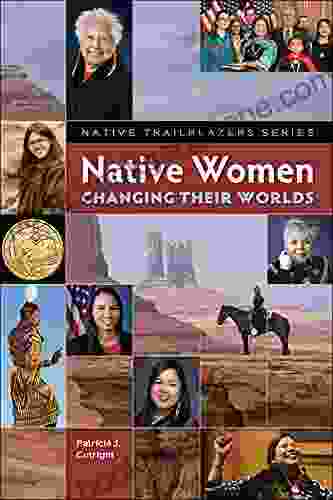
 Jerome PowellNative Women Changing Their Worlds: Empowering Voices, Nurturing Communities
Jerome PowellNative Women Changing Their Worlds: Empowering Voices, Nurturing Communities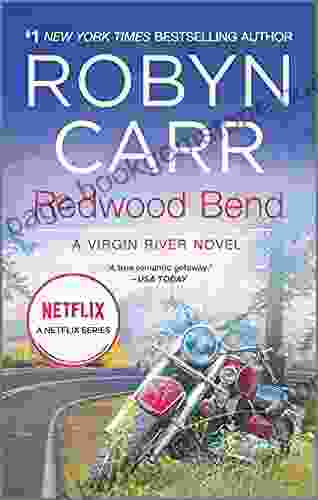
 Jesus MitchellRedwood Bend Virgin River 18: The Ultimate Guide to This Legendary California...
Jesus MitchellRedwood Bend Virgin River 18: The Ultimate Guide to This Legendary California... Aleksandr PushkinFollow ·14.9k
Aleksandr PushkinFollow ·14.9k Milton BellFollow ·3.4k
Milton BellFollow ·3.4k Michael CrichtonFollow ·14k
Michael CrichtonFollow ·14k Mason PowellFollow ·11k
Mason PowellFollow ·11k Gordon CoxFollow ·14k
Gordon CoxFollow ·14k Kyle PowellFollow ·14.1k
Kyle PowellFollow ·14.1k Michael SimmonsFollow ·11.3k
Michael SimmonsFollow ·11.3k Grayson BellFollow ·11.9k
Grayson BellFollow ·11.9k
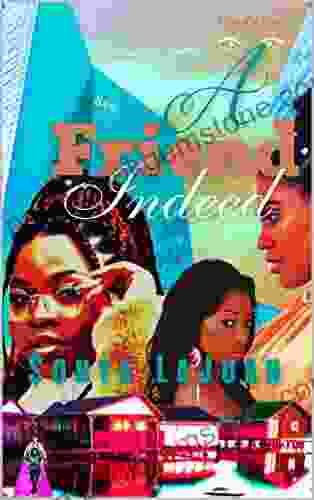
 Holden Bell
Holden BellFriend Indeed One: A Comprehensive Guide to the Essential...
In the tapestry of human existence,...
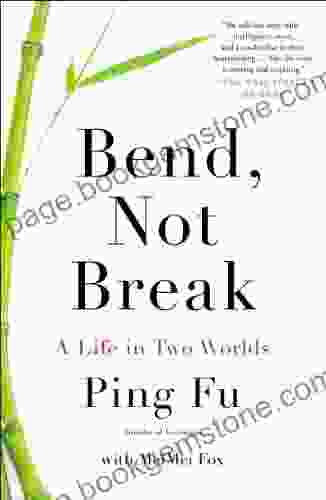
 Gustavo Cox
Gustavo CoxBend Not Break: Life in Two Worlds
In the tapestry of human...
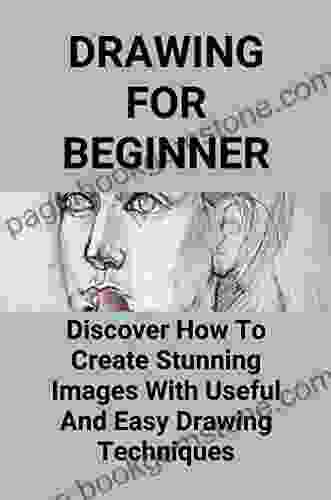
 Andy Hayes
Andy HayesDiscover How To Create Stunning Images With Useful And...
Drawing is a great way to...
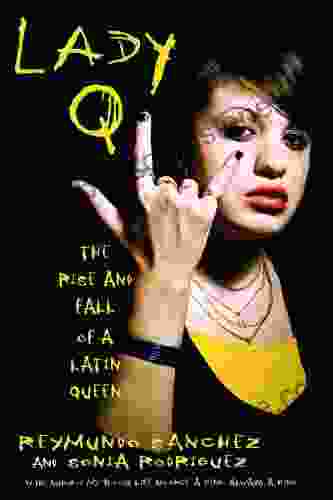
 Aleksandr Pushkin
Aleksandr PushkinThe Rise and Fall of Latin Queen: An Exploration into the...
Latin music has captivated audiences...
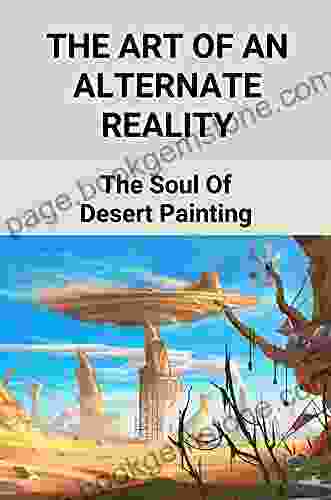
 Ira Cox
Ira CoxUnveiling the Soul of Desert Painting: A Journey into the...
In the vast...
4.5 out of 5
| Language | : | English |
| File size | : | 290743 KB |
| Text-to-Speech | : | Enabled |
| Screen Reader | : | Supported |
| Enhanced typesetting | : | Enabled |
| Print length | : | 549 pages |



